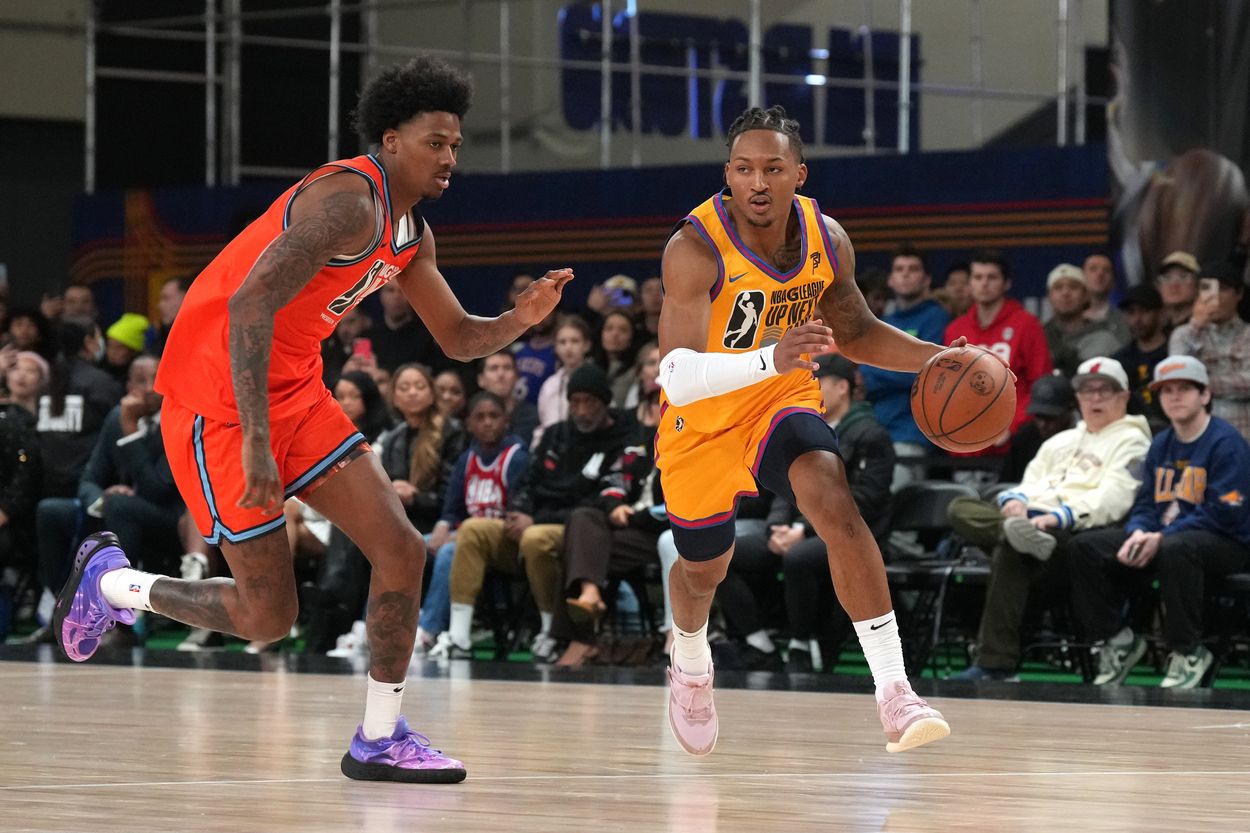
The New York Knicks didn’t just like what they saw from teenage guard Dink Pate—they saw enough to invest.
After an intriguing summer league performance, New York acquired the 19-year-old from the Mexico City Capitanes for Boo Buie.
It’s a small gamble, but one that could pay dividends if Pate’s raw talent develops under the Knicks’ system.
The front office reportedly views him as a candidate for a two-way contract, giving him valuable time to grow gradually.
At only 19, the Knicks are banking on upside rather than current production—a strategy that has paid off before in New York.
Summer league flashes that turned heads
Pate appeared in five summer league games for the Knicks, showing both flaws and flashes of legitimate NBA potential.
He averaged 9.8 points, 6.4 rebounds, and 2.8 assists, shooting 40% overall while an impressive 50% from three-point range.
His most eye-opening performance came against the Washington Wizards on July 19, when he looked like the best player.
That night, he posted 20 points, 10 rebounds, and two blocks, commanding attention with his athleticism and two-way activity.
It wasn’t just the box score—the way he imposed himself on the game hinted at a skillset still being uncovered.
Why the Knicks are intrigued
The Knicks value Pate’s size and instincts, which already give him advantages over many guards his age and experience level.
He’s not polished yet, but tools like length, rebounding ability, and emerging confidence shooting from deep are impossible to ignore.
Pate fits the archetype of a modern guard who can defend multiple positions while contributing in transition and secondary playmaking.
New York is clearly projecting forward rather than reacting to present production, a philosophy that mirrors other recent developmental wins.
If nurtured properly, his ceiling is higher than what typical two-way players usually bring, which makes him worth the risk.
The long developmental road ahead
Pate’s game is still raw, especially in terms of decision-making and consistent shot creation against higher levels of defensive pressure.
At 19, though, he has time on his side, something veteran-heavy teams like the Knicks rarely afford to young players.
Summer league was just the first step—now comes the grind of training camp and eventual G League assignments to refine.
The Knicks know development isn’t linear; patience is required, but early investment in a teenager can pay massive dividends later.
Think of this move as planting a seed—it may take years to bloom, but the potential fruit could be meaningful.
What this means for the roster
Trading Boo Buie to bring in Pate shows the Knicks prefer long-term upside over immediate but limited contributions off the bench.
Pate may not crack the rotation this season, but earning a two-way deal would keep him under team control and developing.
With Jordan Clarkson already added for instant scoring and depth, New York has the luxury of being patient with Pate’s timeline.
The Knicks don’t need him now, but they may need him later, when cost-controlled contributors help balance an expensive core.
In the meantime, expect plenty of G League reps, preseason cameos, and flashes that remind the Knicks why they took the chance.